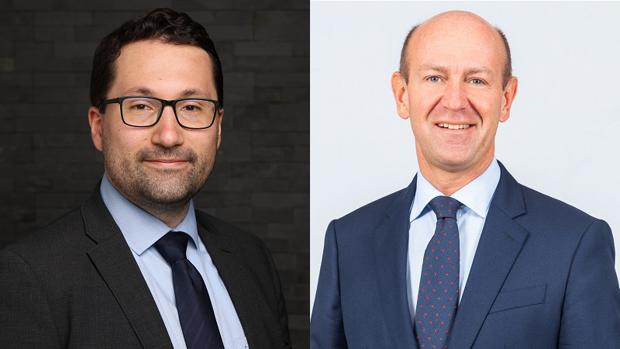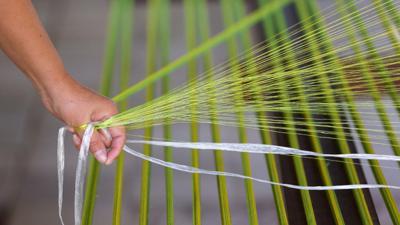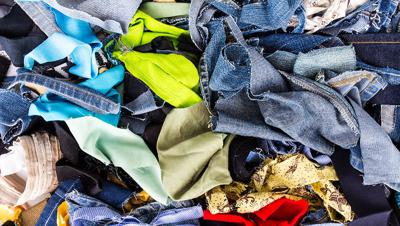Man-Made Fibers International 2/2023

Brian Petter & Frédéric Van Houte (Source: CIRFS)
2022 was a “turning point” in Europe’s foreign and security policy. While geopolitics dominated the political agenda, Europe’s dependency on Russian fossil fuels triggered an energy crisis that is catalyzing the erosion of the industrial base. The man-made fibers (MMF) industry is one of the largest energy-intensive sectors in the textile value chain in Europe. It has been hit hard by the skyrocketing costs of energy and raw material prices. This article explores the impact of the energy crisis on fiber production in Europe.
Europe’s reliance and growing dependence on Russian (foreign) energy in recent years has left the region vulnerable to geopolitical tensions. For a long time, Russia has been one of the main suppliers of crude oil, natural gas and solid fossil fuels. Natural gas has played a central role in the decarbonization of the European industry as a cost-effective alternative to coal, reducing CO2 and air pollutants. Thus, it is not a surprise that the European Union’s gas consumption has constantly increased since the 1980s. For MMF producers in Europe, sustainability has been a priority for decades. Therefore, investments in renewables, in particular solar energy, have been promoted despite little or no support from national governments. For instance, the largest photovoltaic plant for self-consumption in Spain, one of the biggest in Europe, with over 15 MWp (megawatt peak) was built at an MMF production site. The industry has been able to implement energy intensity reduction targets and energy efficiency measures to monitor and reduce its energy consumption. Yet, the slow roll-out of renewable energy across the continent and the rising direct and indirect CO2 costs have driven many sectors, including MMF, towards gas cogeneration over the past years. Indeed, MMF relies heavily on natural gas which has been for long the most viable and reliable enabler of the green transition. In that sense, European MMF producers have been squeezing water from a stone while competitors mostly in Asia keep pollution rising thanks to coal-fired electricity, while benefiting from low state-regulated energy prices and substantial subsidies.
Since 2022, European MMF companies have witnessed an extreme and sudden increase in operational expenses. No industry in Europe was spared by the dramatic increase in energy and raw material prices, inflation, and shortages of raw materials.
Since 2022, European MMF companies have witnessed an extreme and sudden increase in operational expenses. No industry in Europe was spared by the dramatic increase in energy and raw material prices, inflation, and shortages of raw materials.
Natural gas prices on the spot market reached an all-time peak of €236/MWh on a monthly average amid extreme volatility during 2022, whereas prices in the USA and China remained under €15/MWh. For some fiber producers the share of energy costs in relation to the total production costs skyrocketed dramatically. On top of this, MMF producers are being confronted not only with historically high CO2 certificate prices and a weakening demand in and outside Europe, but also with a massive surge of cheap imports of MMF and downstream textile products into the EU, placing additional pressure on local production and worsening the dependency of the textile value chain on China. EU fiber producers have been exposed to unfair competition through dumping and subsidies for many years and this phenomenon has only been reinforced since the energy crisis.
Now, the measures taken by the European Union (EU) have certainly helped to reduce the EU’s dependency on Russian energy. But does Europe remain competitive in a globalized economy? Certainly not. Europe is still far away from a fair and competitive price for industrial electricity and gas consumption as well as from a successful energy transition. Aid is not reaching businesses due to unnecessary bureaucratic hurdles. The result: De-industrialization is not only a threat, it is a reality all across Europe. For instance, almost 50% of all MMF producers are insolvent in Germany and the first production sites in Belgium have been closed forever. For certain MMF, there may be just one producer left in the EU or even no producer at all. The EU’s reliance on inputs from distant shores, a vulnerability that the pandemic so clearly brought to light, has become extremely high and is deteriorating every day. The EU must take serious action to protect its MMF industry in Europe – an innovative and sustainable industry that contributes to the EU’s green deal and its open-strategic autonomy. How can the green deal and circular economy for textiles work properly without MMF industry in the EU?
Brian Petter
Head of Economics & Trade Department
Frédéric Van Houte
Director General
CIRFS
Brussels/Belgium
Head of Economics & Trade Department
Frédéric Van Houte
Director General
CIRFS
Brussels/Belgium



